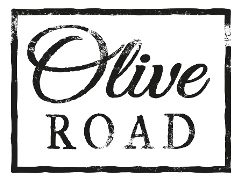Beneath the hum of the traffic on London Wall, the archives of the Museum of London sprawl in identical stacked rows. There are over 100 wedding dresses neatly packed in acid free boxes here; a collection that would excite fashion buffs and brides to be. A wedding dress fashioned from an Indian sari 86 years ago, worn by Dorothy Sybil, a going away outfit from 1943, revealing a note in the pocket ‘bought by mummy at Harrods’, a lace dress worn in 1937 by Kathleen Elsie Clark from Plaistow. Last year, inspired by the glamorous photos of East End brides between the wars, Author Kate Thompson contacted the Museum to gain inspiration for her new novel, The Wedding Girls and interviewed a panel of fashion curators, a wedding dress designer, a 1940’s bride and the grandaughter of an iconic wedding photographer. One of the museum’s many impressive features is that it aspires to retain the social history of a future exhibit as Fashion Curator Beatrice Behlen admits ‘previously when dresses came in we didn’t ask for biography information but now we are trying to find out the stories of the people who wore them by process of elimination’.

Three years ago the Victoria & Albert Museum exhibited a fragment of the wedding dress collection they have in their 100,000 fashion archive, curated by Edwina Ehrman, she explains collecting the story of a dress is a case of genealogy, finding clues to who the bride was ‘the history is embedded in these dresses. It is intriguing to learn as much as you can without being subjective’. It’s mystifying why a bride would consider donating their wedding dress, today women usually preserve their dresses as a grand memento. One woman donated her dress to the V&A after divorcing her husband. The design was fashion forward and she wanted it to have a life, laughing that the dress had been a good choice in contrast to the was husband who was a bad choice. Photographs from talented 1930’s photographer William Whiddin show off newly wed couples gazing through the lens projecting a calm poise as if they were silver screen talkie idols taking the limelight in their stride. ‘It was William who founded the wedding club to make photographs affordable to all’ exclaims his grandaughter Hellen Martin.

This helps to explain why post WWII bride Pat from Bethnal Green was able to save for her extravagant photo shoot. ‘We didn’t spend much on the reception, we had a big knees up, the community came together and only gave up when the beer ran out’. When looking for inspiration, wedding dress designer Kate Halfpenny is drawn to the dresses of the 1930’s and 1940’s with their ‘frothy sleeves, insets of lace, bias cut lines’. Her dress designs are individual and she encourages customer requests such as the mother of the bride hand sewing the last few inches ‘That is how important a wedding dress is, it involves the whole family’.

Kate Thompson’s novel ‘The Wedding Girls’ is out now. I’m going to be focusing on weddings and wedding dresses inspired by vintage over the summer. If you have a story you would like to share, please get in touch.
